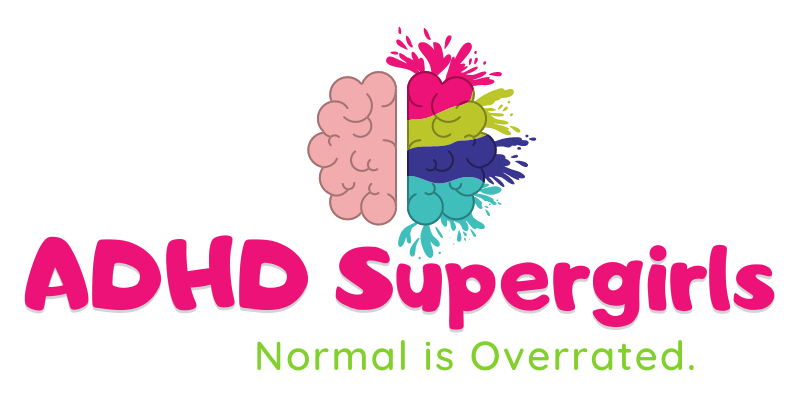If you’re a parent of a girl with ADHD, the challenges are real. But in some cases, your daughter’s support needs may be a bit less from time to time.
But just because your daughter seems to be doing well, doesn’t mean she A, doesn’t have ADHD or B, doesn’t need support. High functioning ADHD in girls often gets undiagnosed and unsupported, which is a huge problem.
Keep reading to learn about why high functioning ADHD in girls exists, and how you can support your daughter with ADHD during your journey in parenting girls with ADHD.
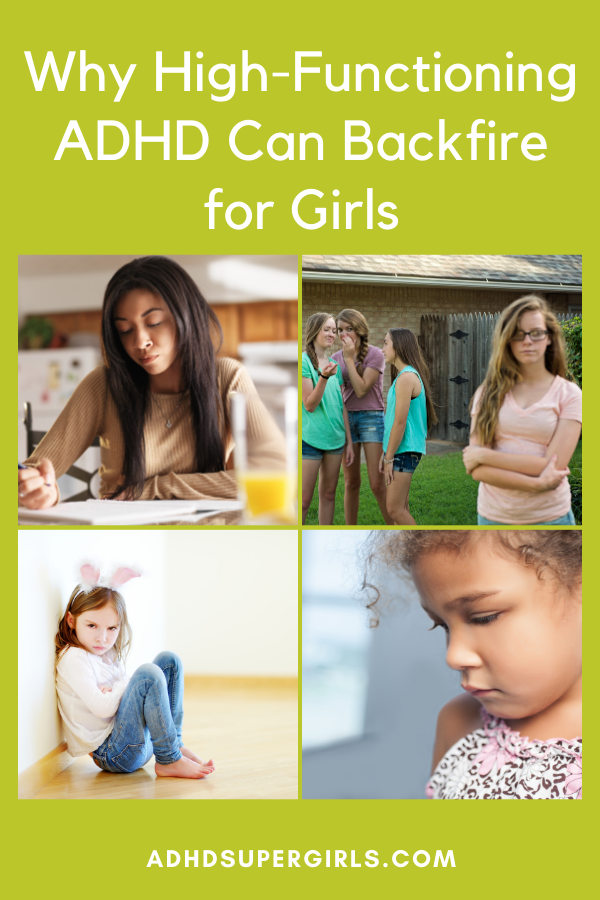
“But she’s doing well in school…”
I shared a few months ago about how the system is failing my daughter with ADHD.
Since then, we’ve had some good progress.
Her doctor officially diagnosed her with ADHD and she is taking a low-dose ADHD medication.
She’s been catching up in school and is doing much better.
We also found out she is dyslexic, and she is now attending classes to help with that.
But our struggles aren’t over.
There is a huge problem with girls with high functioning ADHD.
Why a Label of High Functioning ADHD in Girls is a Problem
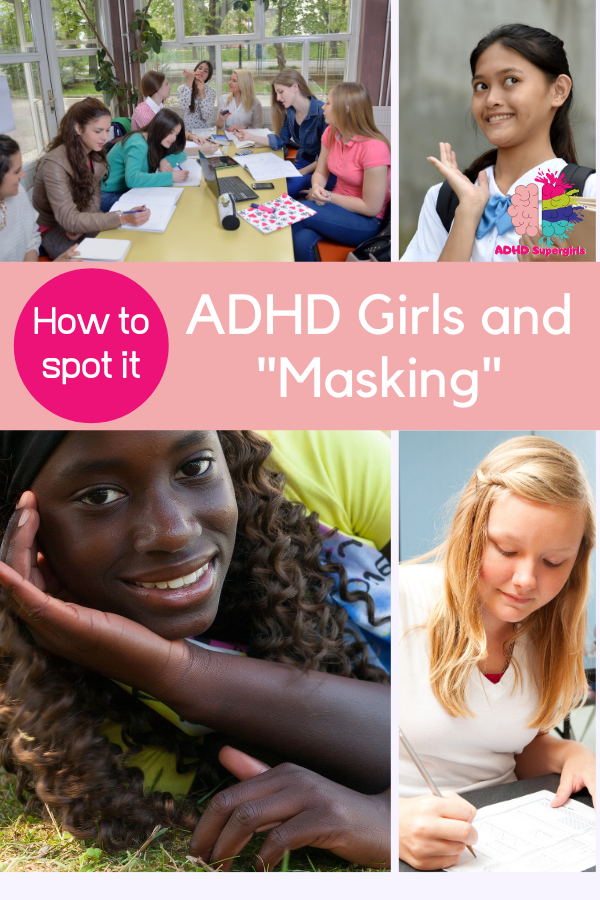
My daughters’ doctor specializes in kids with ADHD, which is one of the main reasons why I picked her as my children’s doctor.
She asks every school to send her a form to submit stating that she has diagnosed a child with ADHD.
But here’s the thing: my daughter’s school won’t accept the doctor’s note as an ADHD diagnosis. Instead, the school has to do its own ADHD evaluation for the school to give her extra accommodations for ADHD.
I don’t know if this is standard everywhere or in just my state, but I find this frustrating, and here’s why:
Girls with ADHD tend to mask in a tested environment.
Girls are taught pretty much from birth to be people-pleasers. And even though I am fully aware of this pressure and try to fight against it as a parent, the message still gets in. A girl does as she is told.
So when a young girl enters a testing environment, she typically does her very best to succeed and perform how she thinks the adult wants her to.
So she’ll try extra hard to focus. She’ll try extra hard to remember.
And bam, the evaluator says the dreaded words, “your daughter doesn’t meet our criteria for additional support for ADHD.”
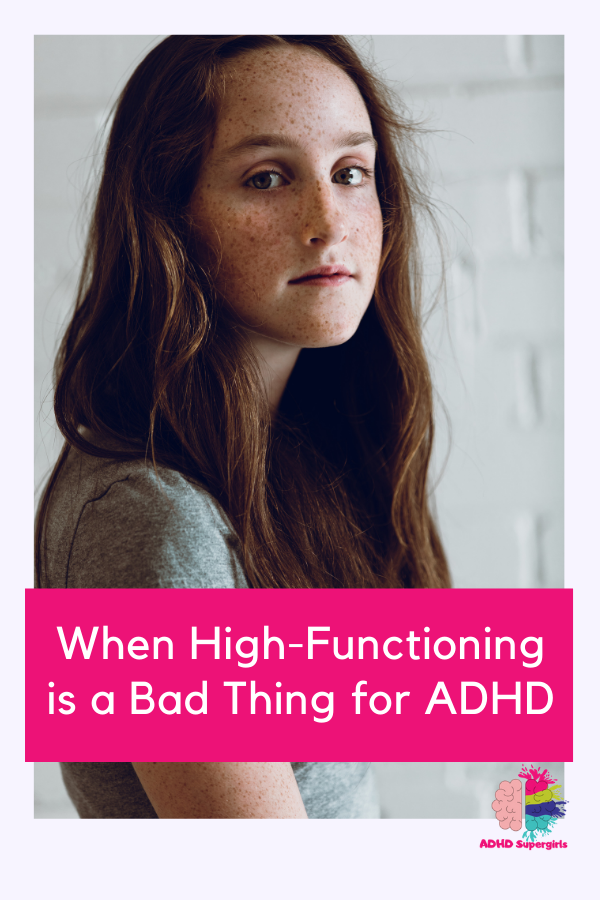
But this sentence does not mean that she does not have ADHD, and it definitely doesn’t mean that she doesn’t need extra support.
A parent who isn’t knowledgeable about the signs of ADHD in girls or the differences in ADHD symptoms in girls vs boys may accept the school’s statement and move on.
Except what happens is that a girl will often have emotional fallout because of undiagnosed ADHD.
How ADHD Masking at School Causes Issues for High Functioning ADHD in Girls
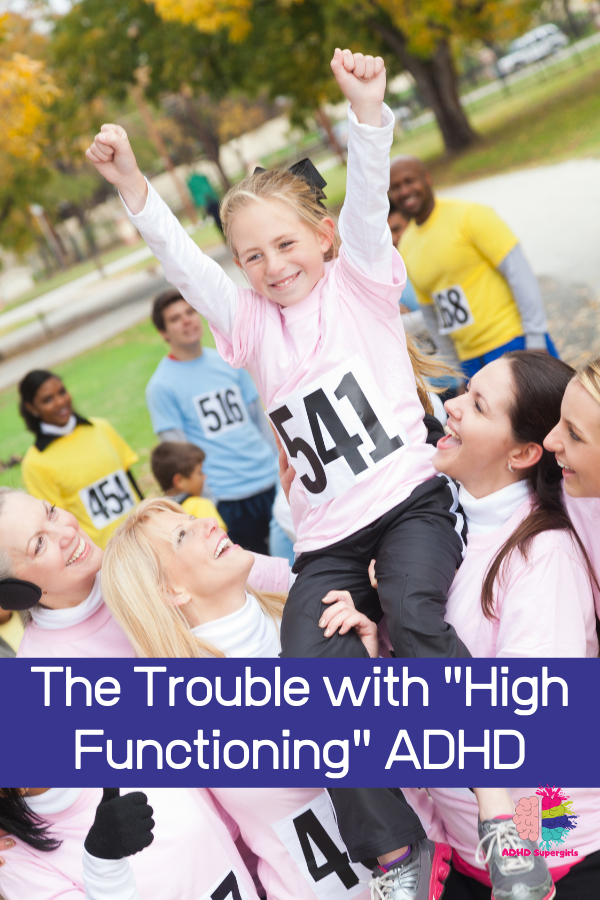
“Masking” is a term that originated in the autistic community describing how some autistic people are able to hide their autism by appearing normal for a while. Then when they come home, there is often a period of detoxing or fallout, where emotions are high or a meltdown may occur.
My daughter excels at masking.
At school, she works hard to follow the routine, listen to the teacher (although she is still distractible, which is how she was able to get diagnosed with inattentive ADHD), get along with others, and do her assignments.
But almost every day, she comes home and needs a period of rest or she will have an emotional meltdown.
Last year, I would often hear her say that she isn’t smart, or that she isn’t as good as the other kids in her class. Since she has received support for her dyslexia, I haven’t heard these comments as often, but she still mentions it from time to time.
Another reason I found the school’s statement frustrating leads me to my second point:
Some Schools are Do Not Recognize ADHD in Girls
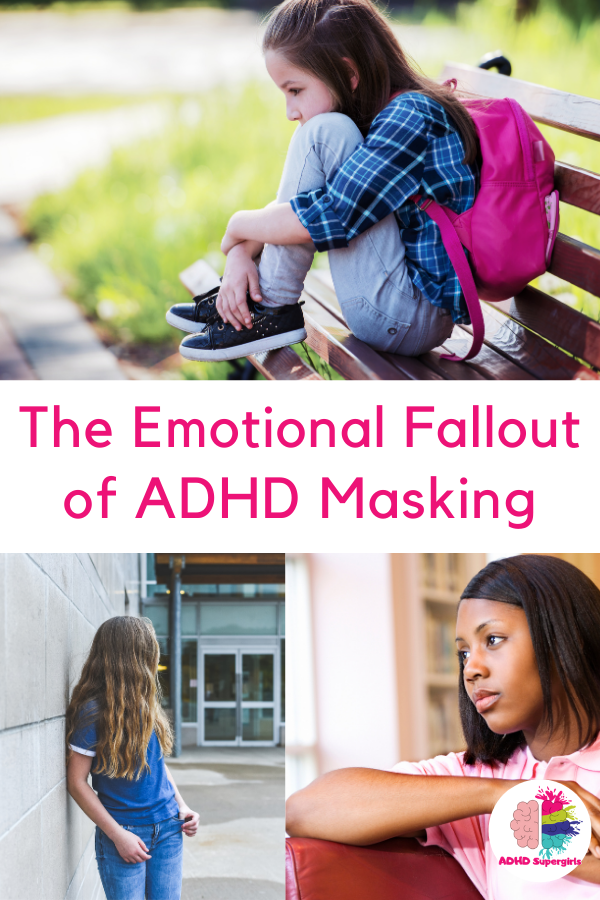
Even though science and medicine are based in “facts,” it turns out “facts” are based on mostly male, mostly white men and boys.
So if you aren’t a white man or boy? Your symptoms might just get missed.
There has been a lot of research in the past 20 years or so about autistic girls and girls with ADHD, but school diagnostic criteria (at least where I live in Texas) has not caught up to the latest research.
So when a school is looking at whether a child qualifies for additional support, they are looking from a lens of what a white boy might need.
In our district, the diagnostician looks at whether a child has enough issues in the classroom to warrant additional support like 1-1 education, special tutoring, or test accommodations. Typically, the first thing they look at is grades.
If a student has passing grades (they don’t have to be “good”), they may decide that the student doesn’t need extra support. This is likely because resources are limited and they need to go to the “worst” cases, but it still leaves many high-functioning girls with ADHD unsupported.
The other thing the school typically looks at is if the student is disrupting others. This often happens with boys who have hyper ADHD, but it is rarely a problem for girls with ADHD. So that’s another way that schools may neglect to support a girl with ADHD.
The Consequences of Unsupported High Functioning ADHD In Girls
So what happens when you have a girl who:
- Needs support at school but doesn’t get it
- Tries to please others socially but constantly struggles
- Comes home and has emotional meltdowns that irritate others
This, is a recipe for anxiety, depression, low self-esteem, and possibly even self-harm in the teen years.
Even knowing that my oldest daughter had ADHD, she still struggles with anxiety and depression, even though she gets support.
A girl who gets no support at all, no matter how “high functioning” she seems, is going to suffer.
That’s why it’s incredibly important that we learn to identify the hidden ADHD behavior in girls and get support in the early years so that we can reduce the anxiety and depression that goes along with so many cases of teenage girls with ADHD and women with ADHD.
More Resources for Parents of Girls with ADHD
How to Set Up an ADHD-Friendly Study Space for Girls
ADHD Tools that Help Girls Learn
